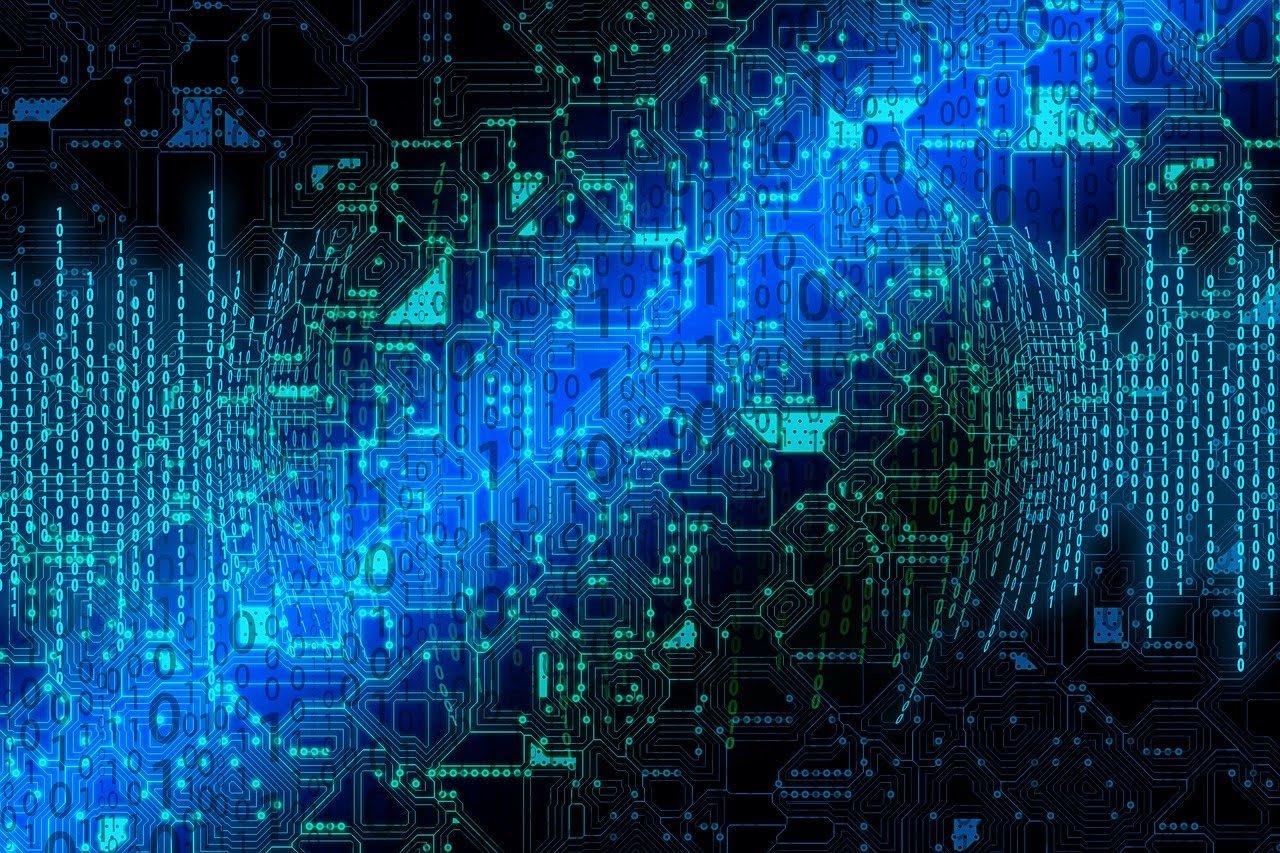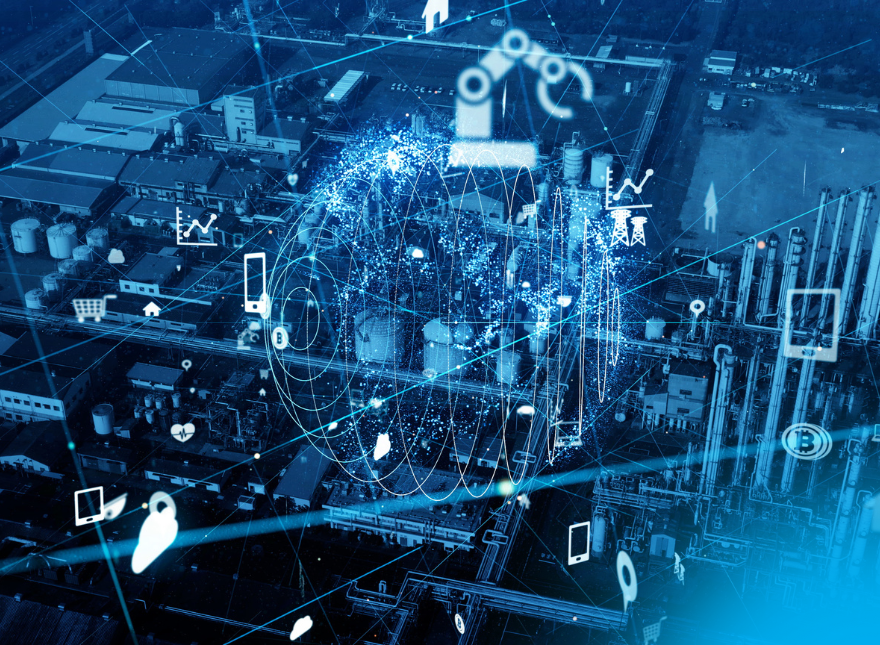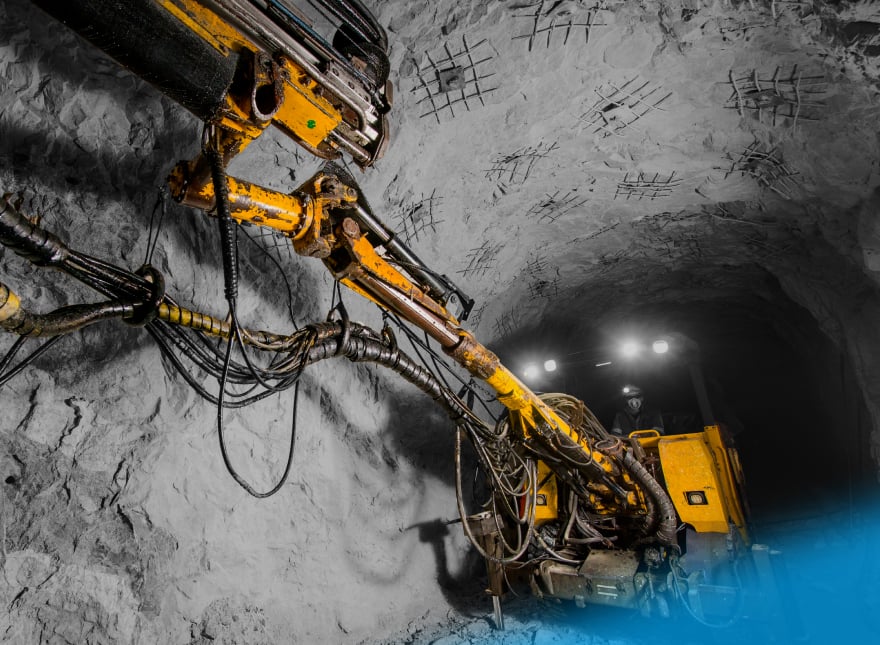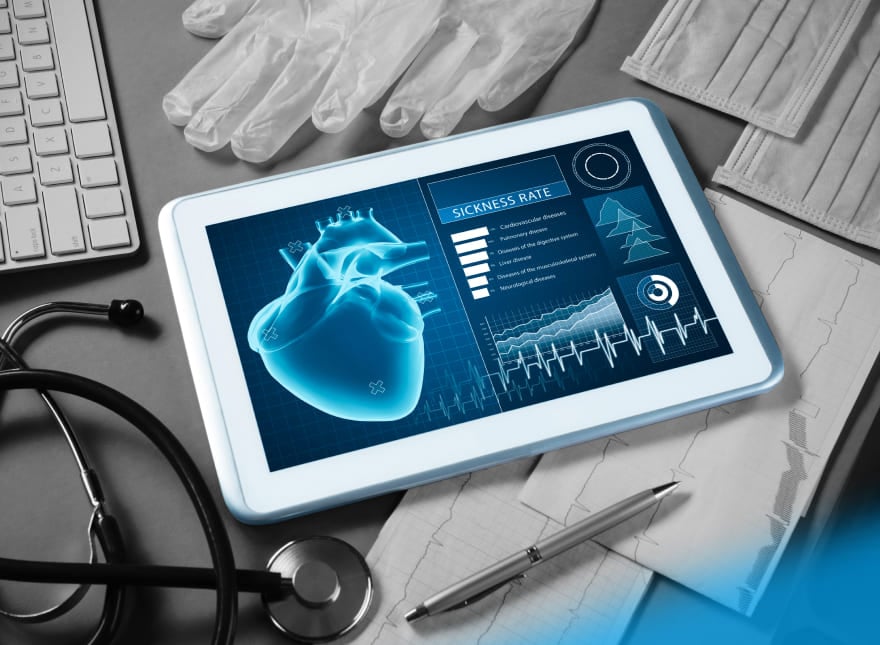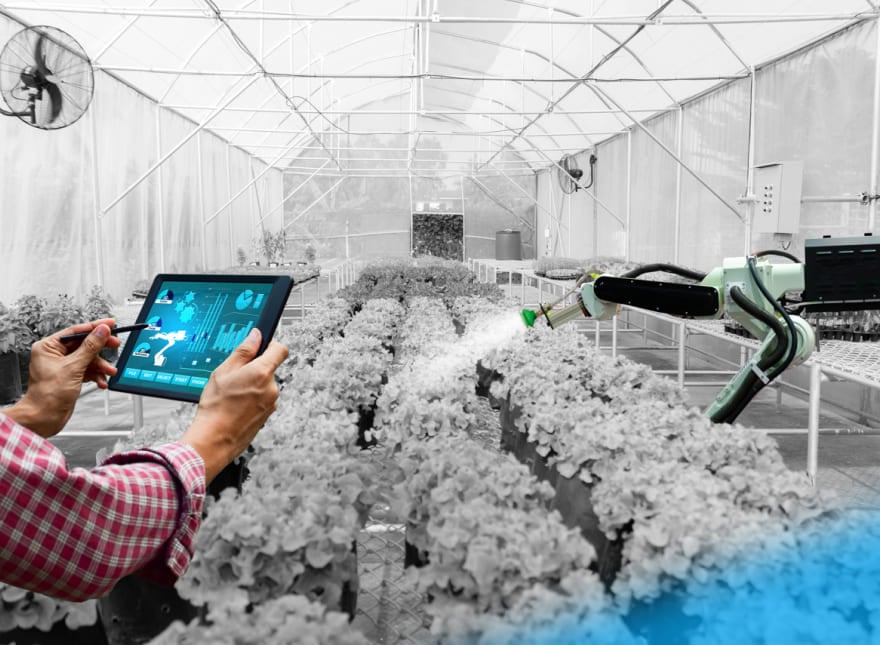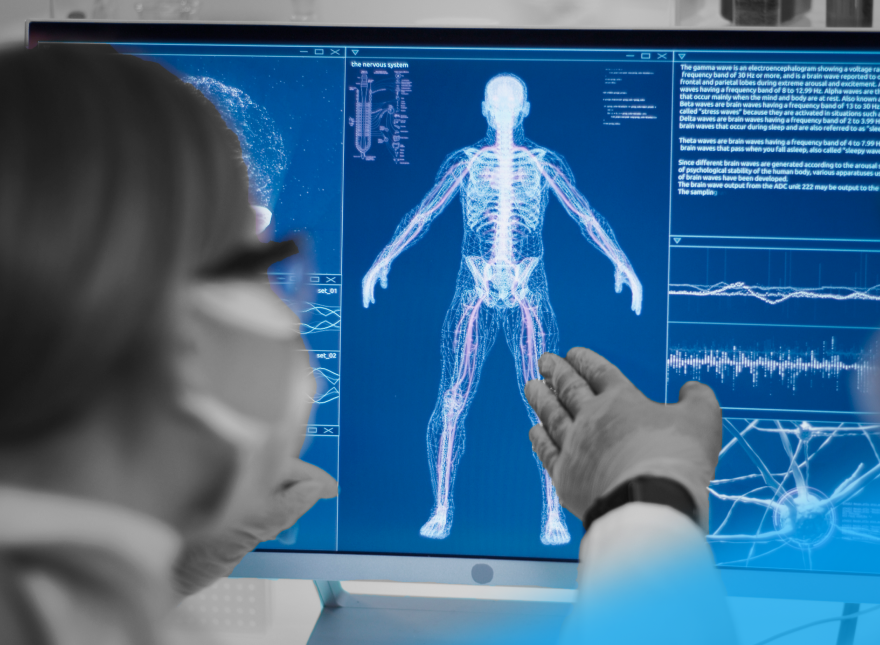Improving Safety with AI and IoT for the Mining Industry
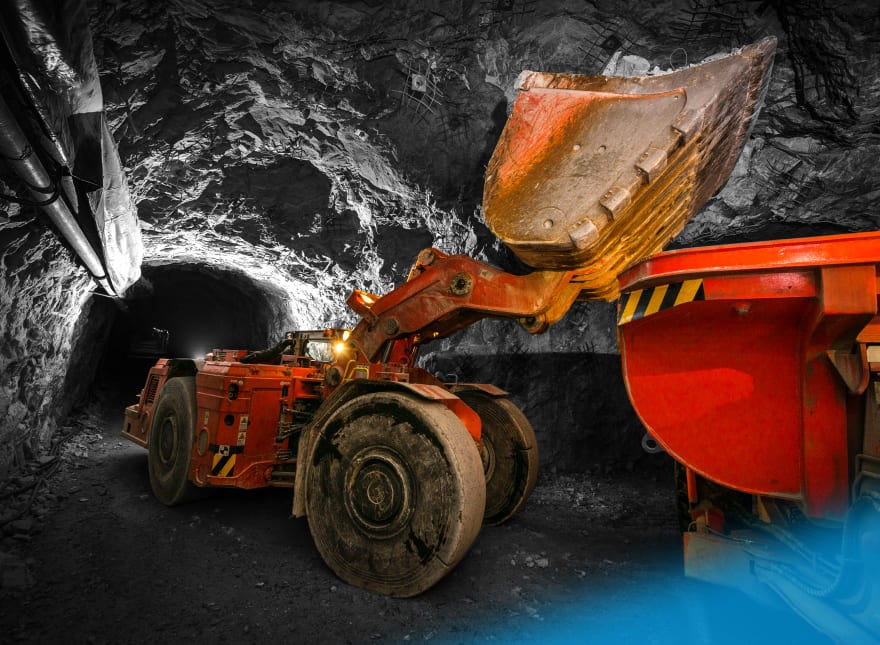
Mining is one of the most hazardous industries to work in. It is prone to unpredictable emergencies almost every hour. For example, teams often need to physically extract some types of minerals. With this comes a risk of injury due to falling debris. In the US alone, there were 71 fatalities from mine-related work accidents in 2010. By 2020, that number had reduced by half.
AI and IoT in mining have significantly contributed to this reduction, since they help initiate immediate actions to prevent injuries.
For example, operators can using digital solutions for industrial manufacturing. Sensors help detect potential spillages and breakdowns in shafts. If something goes wrong, engineers are notified immediately and can quickly act to mitigate hazards.
Another example of reinforcing coal mine safety using IoT is obstacle detection. Mining trucks equipped with tags, radars, video monitoring, and infrared systems see hindrances and notify machinery operators. Based on sensor data, IoT suites can plan the safest pathway around an obstacle. No engineer intervention is necessary.
These are just a couple of examples of how AI and IoT demonstrate value for coal mines and ensure safety. In fact, there are tens of them! Let’s consider the most prominent examples.
Table of Contents
Use Case 1: IoT in Mining to Improve Worker and Equipment Health
Coal dust inhalation is one of the most common concerns for miners. The ongoing inhalation of coal dust can cause “miner’s black lung”. Its symptoms include shortness of breath and scarring of lung tissue. Dust is also harmful to the gears of machines.
To protect workers and mining machinery from dust pollution, companies can implement IoT solutions for dust control. They consist of real-time monitoring sensors, data APIs, and analytics platforms. Data on the generated dust is monitored and analyzed in real time. Then, the analytical engine provides service engineers with unique insights about the dust level in the selected areas. This helps engineers make informed decisions on how to reduce the dust level to make mining operations safer.
Workers also face the risk of methane and carbon monoxide poisoning. To prevent this, technology providers have introduced gas detection, airflow, and ventilation monitoring sensors. These sensors monitor the levels of toxic and flammable gas in an environment. If a gas leak or explosion occurs, alerts are sent to workers. Sensors also ensure that airflow and ventilation are kept to optimal levels.
Real-Life Example: Controlling Coal Mine Dust Levels
Dust Master System (DMS)—the solution from the Canadian company ABCDust—watches and suppresses dust levels during the mining process.
This IoT system is a set of suppressive additives, vehicles, and sensors. A special vehicle diffuses these additives in the mines. Sensors monitor and control the whole process in real-time. The system also includes an integrated management solution that is used for the continuous tracking and optimization of dust suppression.
Benefits
The company guarantees their clients:
- Up to 99% dust suppression
- Water savings of 90%
- Reduced CO2 emissions
- Safer mining sites
- Prevention of health hazards to personnel
- Cleaner operations.
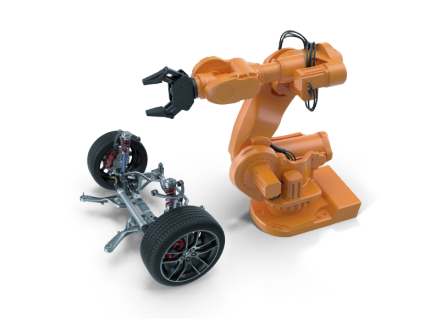
Use Case 2: AI in Mines to Manage Accidents
From mine cave-ins to gas explosions and extreme temperatures, mining accidents are extremely dangerous. However, they are manageable. Here is where AI and IoT for worker safety come to the rescue.
Companies may leverage AI algorithms and IoT-based suites consisting of sensors, alarms, and mobile and web applications. Sensors monitor and detect any hazardous issue, and alarms immediately warn about casualties. Data is analyzed in real-time and translated into easy navigation recommendations. All this is displayed in an application in the form of guidance.
IoT can even create an evacuation route and change it according to data on exposure to potential hazards.
Also, using real-time data and analytics, AI in the mining industry can predict process failures.
Real-Life Example: Replacing Humans in Risky Places
To enhance mine safety by optimizing supervisory efficiency, Huawei designed the AI-powered Mine Brain solution. The system’s main purpose is to replace humans where there are dangerous conditions.
Thanks to the trained AI algorithms, Mine Brain detects any potential danger. Computer vision identifies unsafe scenarios, and sends them to the central system. Then, the system generates safety recommendations for where humans should be replaced. One Mongolian coal mine already uses Huawei’s solution. They apply it to reduce the number of people needed in shafts, and maintain safety records.
Benefits
Huawei’s client says they managed to:
- Enhance the safety of its workers by replacing them with equipment
- Halve the number of injuries
- Draw up safety programs and safety assessment plans.
With artificial intelligence in the mining industry, companies know where to deploy autonomous machines instead of staff. Here’s a fact: replacing 30 workers with equipment could save a mine around $900,000 a year!
Use Case 3: AI in Mining to Monitor Staff Wellbeing
IoT and AI in mining have also brought positive change to personal health management. Miners are at constant risk of drowsiness and fatigue-related injuries, heat and humidity stress, and other health dangers.
To monitor workers underground, vendors offer various smart devices, like watches, helmets, vests, and caps. These devices provide real-time information about major biometrics and notify of any deviation. This may help save lives and considerably reduce work-related injuries and costs.
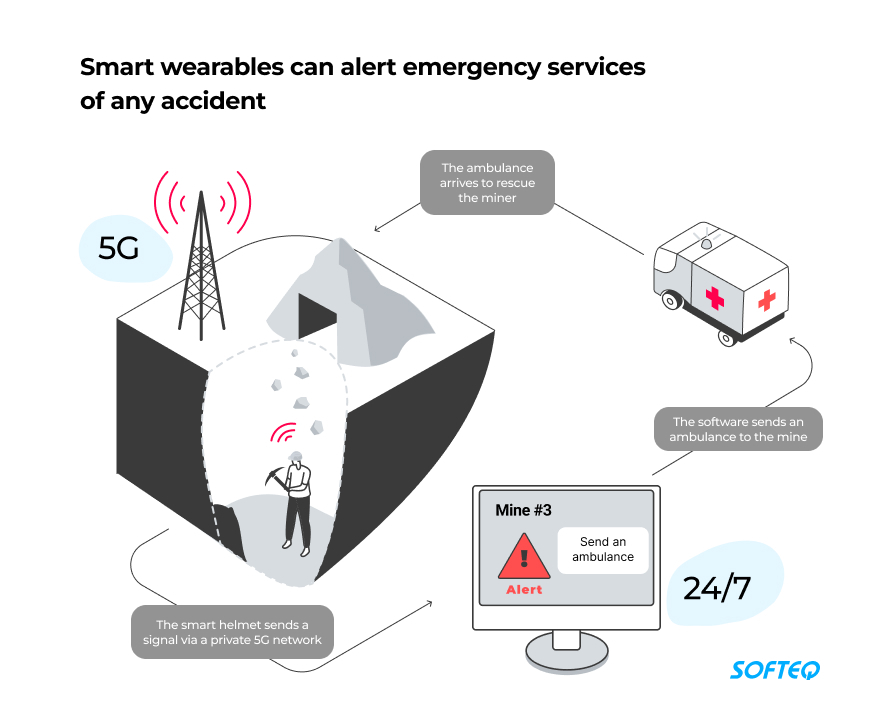
Real-life Example: Tackling Driver Drowsiness
An Australian-British mining company, BHP, has recently implemented AI-powered smart caps in their copper mines in Chile. Fatigue and drowsiness have been leading causes of accidents there, so BHP decided to eliminate the issue.
The caps measure driver fatigue by analyzing brain waves. Inside the cap, there is a sensor strip that measures brain waves and detects patterns that show signs of fatigue. The sensor talks to a unit in the truck’s cabin. If it detects fatigue, it notifies drivers and safety supervisors.
Benefits
Since the company employed smart caps, it managed to:
- Reduce the number of costly and dangerous accidents by 70%
- Achieve better safety, health, and productivity outcomes at the mine
- Provide 178 workers with specialized treatment for associated sleep disorders.
Real-life Example: Tracking Worker Safety
Maximo Worker Insights by IBM and Garmin helps protect the wellbeing of miners. It monitors biometric and environmental data to help identify whether staff are at risk. To help protect worker wellbeing, the solution allows companies to take immediate safety actions. Needless to say, it also helps reduce insurance costs.
The IoT platform comprises wearables, smart devices, and environmental sensors. The data gathered is processed and analyzed in real-time. Then, the system provides organizations with important safety insights. If a hazard arises, the platform alerts engineers.
Benefits
Using Maximo Worker Insights, customers will:
- Proactively identify and respond to potential hazards
- Keep their workforce safe
- Drive safer mining operations
- Reduce insurance costs.
Use Case 4: IoT in Mines to Check if Personnel Follow Safety Rules
Unfortunately, miners often fail to follow basic safety rules. This may involve a lack of awareness, ignorance, or even deliberate violations. Unsafe actions may cost lives, but smart technologies step in to prevent this.
For example, the use of IoT and AI platforms helps detect whether workers are wearing their personal protective equipment (PPE). AI-enabled cameras monitor miners working at height. They must wear safety wires and harnesses. Not only do the sensors detect if the workers are wearing their PPE, but they can also establish whether the PPE is fixed and tethered.
Real-life Example: Tracking Miners for Wearing PPE
A US company, Guardhat, uses IoT-powered helmets to collect data on worker activity. The helmets also track location, pulse, body temperature, and work environment. Each hard cap sends data to a safety control center for monitoring, analysis, and quick response.
The helmets combine cameras, sensors, and microphones used for data collection. Sensors monitor workers and detect how and where they operate. They also determine whether miners are safe to do work there. For example, they detect whether or not a worker is wearing appropriate safety kits for work off the ground. If they are unequipped, the system stops the worker from doing their job. In the event of a fall, exposure to toxic gasses, or proximity to moving equipment, the system alerts safety supervisors.
Benefits
Companies using the Guardhat helmets can:
- Significantly improve safety management
- Reduce workplace injuries by 20%
- Gain a deeper understanding of the workplace situation.
Afterword
Predicting people’s behavior and risks to equipment, health, and safety is crucial in the mining sector. But with digital technologies leading the way, it’s getting more and more possible.
Looking to boost safety in your organization? Talk to our expert team to learn more about applying AI and IoT for mining safety.
More articles on the topic
